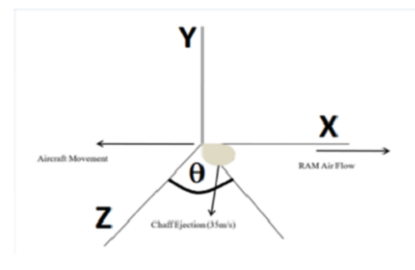


Indian Journal of Science and Technology
Year: 2022, Volume: 15, Issue: 2, Pages: 62-68
Original Article
Vivek Bajpai1, Parneet Kaur2, Verandra Kumar3, Alok Basita4, Prashant Vasistha5*, Ravindra Kumar6
1Technical Officer, Defence Laboratory, Jodhpur, India
2Sr Engr Jio Platform Ltd, Navi Mumbai, India
3Scientist D, Defence Laboratory, Jodhpur, India
4Scientist E, Defence Laboratory, Jodhpur, India
5Scientist G, Defence Laboratory, Jodhpur, India
6Scientist H, Defence Laboratory, Jodhpur, India
*Corresponding Author
Email: [email protected]
Received Date:03 December 2021, Accepted Date:24 December 2021, Published Date:27 January 2022
Objective: This research reports the effect of turbulence on the dynamic Radar Cross Section (RCS) of chaff cloud. In the era of modern warfare technologies, most efficacious electronic countermeasure employed by the armed forces of various major powers is the Chaff. Chaff is based on the expulsion of numerous electrical dipoles of different length to cover the broad spectrum of radar frequency. This mechanism helps in deceiving the enemy missile by producing the required RCS. RCS of chaff cloud is a dynamic entity and rely on several aerodynamic factors. Methodology: Effects of turbulence on dynamic RCS are studied using Ansys Fluent for aerodynamic blooming simulation and Ansys HFSS for simulation of RCS of the bloomed chaff cloud. Findings: The subject of the paper corresponds to the significant effect of turbulence on the expeditious blooming of chaff cloud. The RCS of turbulent flow was higher by 1.5dBsm to 2.5dBsm for 50msec. The turbulence effect has reduced the blooming time of chaff filaments in the range of 25msec - 50msec. Novelty: Turbulence plays important role in faster blooming of chaff cloud and achieving minimum threshold RCS required for deception of RF seeker missiles.
Keywords: Chaff; RCS; Turbulence; Modelling and Simulation
© 2022 Bajpai et al. This is an open-access article distributed under the terms of the Creative Commons Attribution License, which permits unrestricted use, distribution, and reproduction in any medium, provided the original author and source are credited.
Published By Indian Society for Education and Environment (iSee)
Subscribe now for latest articles and news.